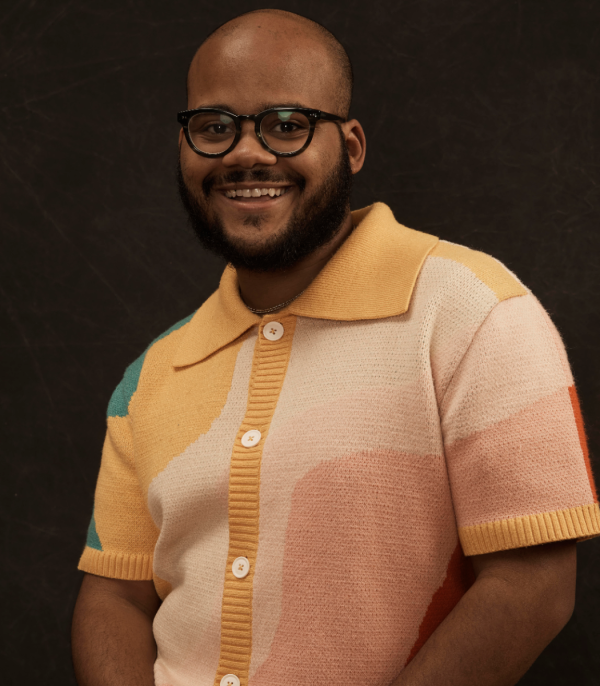February 17, 2023
Sparking Change: Director Lincoln Mondy Addresses Tobacco’s Harm Through the Lens of Film
Filmmaker Lincoln Mondy shares his path to tobacco education and how young people can get involved in tobacco and vaping prevention.
More than 3 million middle and high school students in the United States reported using tobacco or vaping products in 2022. While we know the tobacco and vaping epidemic continues to impact millions of lives, its historical impact on the health of Black Americans has been devastating.
Filmmaker Lincoln Mondy is on a mission to build coalitions through education and address the tobacco industry’s predatory behavior toward Black communities.
Released in 2017, Lincoln’s film “Black Lives / Black Lungs” highlights decades of targeted and harmful marketing of menthol cigarettes, and how it has led to long-term health disparities among communities of color. Lincoln is now building on this foundation with the upcoming film “Black Lives / Black Lungs: The Journey of a Stolen Leaf,” produced in partnership with Truth Initiative.
Lincoln shares his path to tobacco education, how young people can get involved in tobacco and vaping prevention, and a preview of his upcoming film in the following Q&A!
Q: As a filmmaker, what sparked your interest in shedding light on the tobacco industry and its impact on Black communities?
Lincoln Mondy: It all started with a question, really. I became curious and followed the answers. That’s how most of my projects start. At the time, I haphazardly found myself in an internship where I was exposed to new information and a coalition of elders, advocates, experts, and young people ringing the alarm regarding menthol’s intentional impact on Black people.
I focused and committed to dissecting how menthol came to be synonymous with my – our – Blackness. I read, listened, attended conferences, cold called, emailed, and interviewed people. I asked questions, and they added more. Strangers turned into sources, and I was inundated with answers. It was clear to me that the tobacco industry deployed a successful campaign to transform menthol into a “Black” cigarette.
I immediately saw the linkages to my own life. As a kid, menthol was just... “Black.” I knew the packaging, recognized the branding, and saw it fed to me as culture via the media.
The work to make both films has been about exploring how my perspective isn’t unique, or a coincidence, and inviting viewers in along the way.
Q: “Black Lives / Black Lungs” focuses on the predatory marketing of menthol cigarettes and its disproportionate health effects. Can you share more about why it was important to highlight menthol?
LM: It’s important because menthol is uniquely damaging. Just like cherry, sour candy, and coconut, menthol is a flavor. The additive masks the harshness of tobacco, creating a product that is easier to get addicted to, and harder to quit. The marketing of menthol is also notable. Tobacco companies advertised cigarettes as being fresh, cool, and a sign of independence and freedom. Companies used doctors to advertise cigarettes, even going as far as claiming that menthol cigarettes helped asthma – all without any scientific evidence.
It’s not a coincidence that menthol was the product so heavily pushed on Black people. A successful 50+ year campaign has transformed the flavor into this separate beast, but menthol is a case study for an industry that has always traded in doubt and distraction.
Q: Your upcoming film, “Black Lives / Black Lungs: The Journey of a Stolen Leaf” explores the origins of tobacco commercialization in the U.S. Why is this history key to understanding how tobacco has impacted both Black and Indigenous communities over the years?
LM: The upcoming film names the theft that birthed the tobacco industry. As colonizers pillaged and stole land from Indigenous communities, they also stole their sacred plant, tobacco, and turned it into a cash crop. By 1630, more than a million and a half pounds of tobacco were being exported from Jamestown every year, setting into motion tobacco as an early justification for slavery and the billion-dollar industry we know today. Contextualizing the origins of tobacco shows that it was clearly America’s first great enterprise – the original industry whose corporate practices, power dealing, and tactics served as a template for all the industries that followed.
After connecting tobacco to colonization, slavery, and capitalism, I take viewers to the present by focusing on flavors and industry tactics as connective tissues tying traditional cigarettes and e-cigarettes together. Experts and advocates provide commentary and examples of the industry’s playbook: buy Black influence, sow doubt in science, and subvert regulation.
Big Tobacco has never been far from its origins; the industry is dusting off their old predatory tactics for new generations.
Q: Although cigarette sales have decreased in recent years, the industry has pivoted from cigarettes to flavored e-cigarette products. How is vaping harmful for Black people and other vulnerable communities?
LM: It’s not as pronounced as the impact of traditional menthol cigarettes on the Black community, but vaping is more about a giant getting a second life. An industry getting away with the same thing a second time – and what that says about Blackness in America. That the menthol campaign went on for decades, without oversight or accountability, and the vaping illnesses in mostly white populations turned into a vaping epidemic in under half a decade.
Vaping, the products, the companies, the marketing, the lawsuits – all of it is part of the tobacco industry’s story, a story intimately tethered to colonization, slavery, capitalism, and the Black experience in America.
Q: Why is it important for youth to be involved in tobacco and vaping prevention?
LM: I created this film because I knew my generation was over the scare tactics, and I felt like there wasn’t an updated perspective capturing the attention of young people who would care. I saw public health as stuffy and very, very white, and older [than the young people they are trying to reach]. I knew all perspectives were needed, but I didn’t find a consistent narrative that I knew would resonate with my peers.
That’s why it’s important for young people to be involved – new ways of doing the work, creative solutions, and a willingness to learn from the established foundation that’s always been built. This collaboration is critical, and it’s why I work with youth-centered organizations today.
I want Gen Z to also rewrite what public health means!
Q: What are some ways that youth can get involved in curbing tobacco and e-cigarette use?
LM: Tap into the work that’s already being done in your local community and state. You don’t have to start from scratch – do some research and look into programs from local nonprofits, your health department, and other state advocacy groups. Truth Initiative has more!
Q: What else should folks know about the upcoming film and your work overall?
LM: I co-authored a zine with HBCU students and the Black Women’s Health Imperative as a resource for the second film. You can also find me at LincolnMondy.com for screenings, partnerships, or just to say hi!
Are you an educator or caregiver who’s interested in tobacco prevention and cessation? In partnership with CVS Health Foundation, Healthier Generation has free tools to help strengthen district policies, support tobacco-free environments, and prioritize the use of restorative practices. Learn more at our Tobacco-Free and Vaping-Free Resource Hub.




